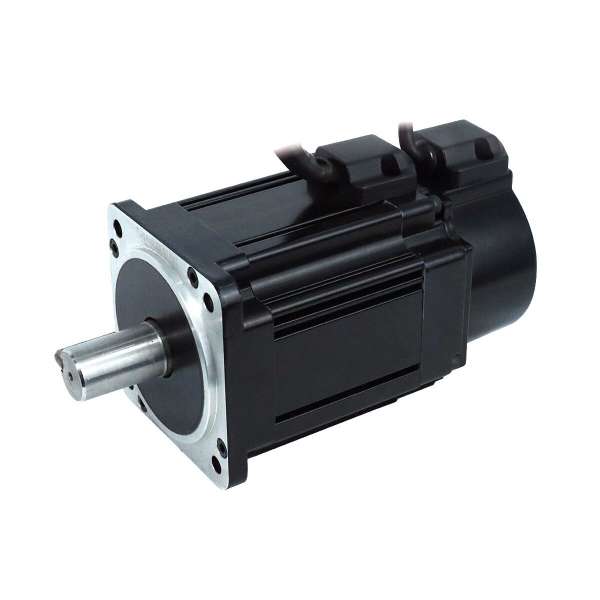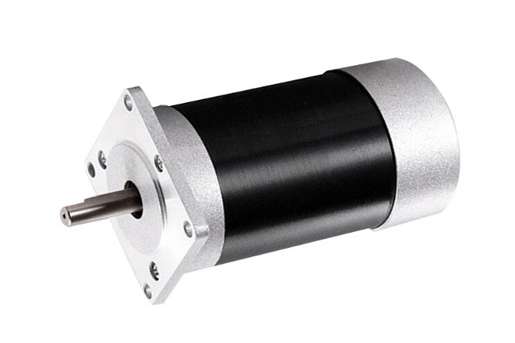

@72V_BLDC_Motor
In the design of modern automobiles and home appliances, the quest for high power density and high efficiency motors has become a central requirement, and Brushless.com's 72V Brushless DC motors (PMBLDC motors) are ideal for a wide range of applications due to their significant performance benefits and stability.Brushless.com's 72V Brushless DC motors are based on the Permanent Magnet Synchronous (PMS) design. This design provides high power density while reducing the energy consumption of the motor and improving the overall efficiency of the motor. This paper will take a closer look at the key features of Brushless.com's 72V brushless DC motor, including its inherent cogging torque, the impact of different parameter choices on its performance, and specific ways to minimize noise and vibration, to help users better understand the motor's characteristics and its value in high-efficiency, stable applications.
Brushless.com's 72V brushless DC motors are constructed with high-performance permanent magnets, and the choice of such permanent magnets greatly affects the motor's cogging torque. Cogging torque is generated by the interaction between the rotor permanent magnets and the stator slot structure, creating an inherent cogging torque as the permanent magnets in the rotor attempt to align with the slots in the stator. Brushless.com's 72V Brushless DC Motors utilize isotropic bonded magnets, which effectively minimize the effect of cogging torque on the operation of the motor. This design ensures high motor output while minimizing noise, vibration and positional errors caused by cogging torque. As a result, Brushless.com's 72V brushless DC motors offer significant advantages in applications that require smooth and quiet operation. To further optimize motor performance, motor designers can effectively reduce the effects of cogging torque by changing the motor's structure, magnet shape and magnetization curve, which not only make the motor run smoother, but also help to extend the life of the motor.
The high stability of Brushless.com's 72V brushless DC motors is due to a variety of structural design optimizations. Reducing cogging torque is especially important for applications that require low noise and vibration. The reduction of cogging torque can be achieved by introducing imaginary slots in the stator teeth, which effectively increases the uniformity of the air gap and thus reduces fluctuations in air gap flux. In the design of Brushless.com, the reduction of cogging torque is achieved by avoiding the integer relationship between the number of slots in the stator teeth and the number of poles through the rational selection of the number of imaginary slots. Studies have shown that selecting a smaller number of imaginary slot structures can effectively suppress the cogging torque without significantly changing the air gap flux. Through precision design, Brushless.com's 72V brushless DC motors are not only able to provide stable operation at low loads, but also able to increase the total power density of the motor by reducing cogging torque fluctuations, a design that greatly meets the user's dual requirements of high performance and long life for the motors.
In designing Brushless.com's 72V brushless DC motors, the motor's performance is also affected by the magnet material chosen. For example, in the design of the 12-slot, 8-pole motor, the current, stator OD, stack length, core material, and base speed were fixed to enable comparison of the performance of different magnet materials. The performance of different materials in motor performance can be clearly seen by the reverse electromotive force waveforms and the amplitude of the cogging torque ripple obtained at a speed of 1000 revolutions per minute. The cogging torque is a fluctuation due to the interaction of the slot structure of the stator core with the rotor permanent magnets. For Brushless.com's 72V brushless DC motors, the optimized design effectively reduces this torque fluctuation by further suppressing the cogging torque through rotor deflection, magnet shaping, and pole pitch adjustment, ensuring stable output under varying loads. These design methods are widely used in Brushless.com's brushless DC motors, effectively improving the motor's output efficiency and providing users with a better motor experience.
Install Palscity app







